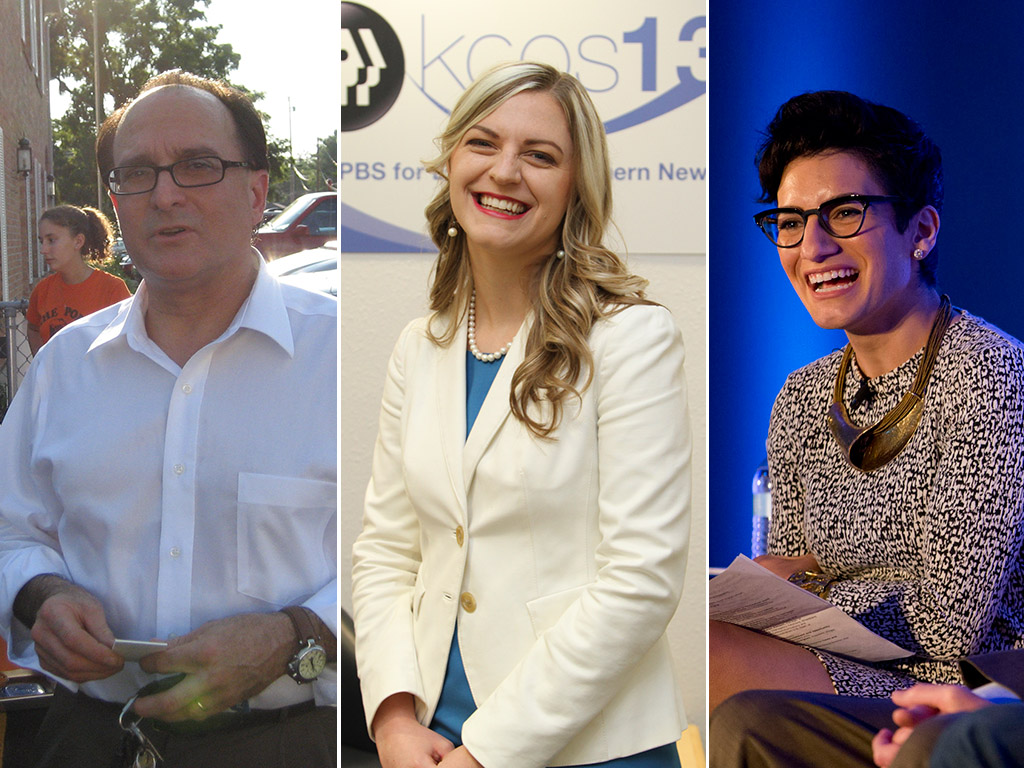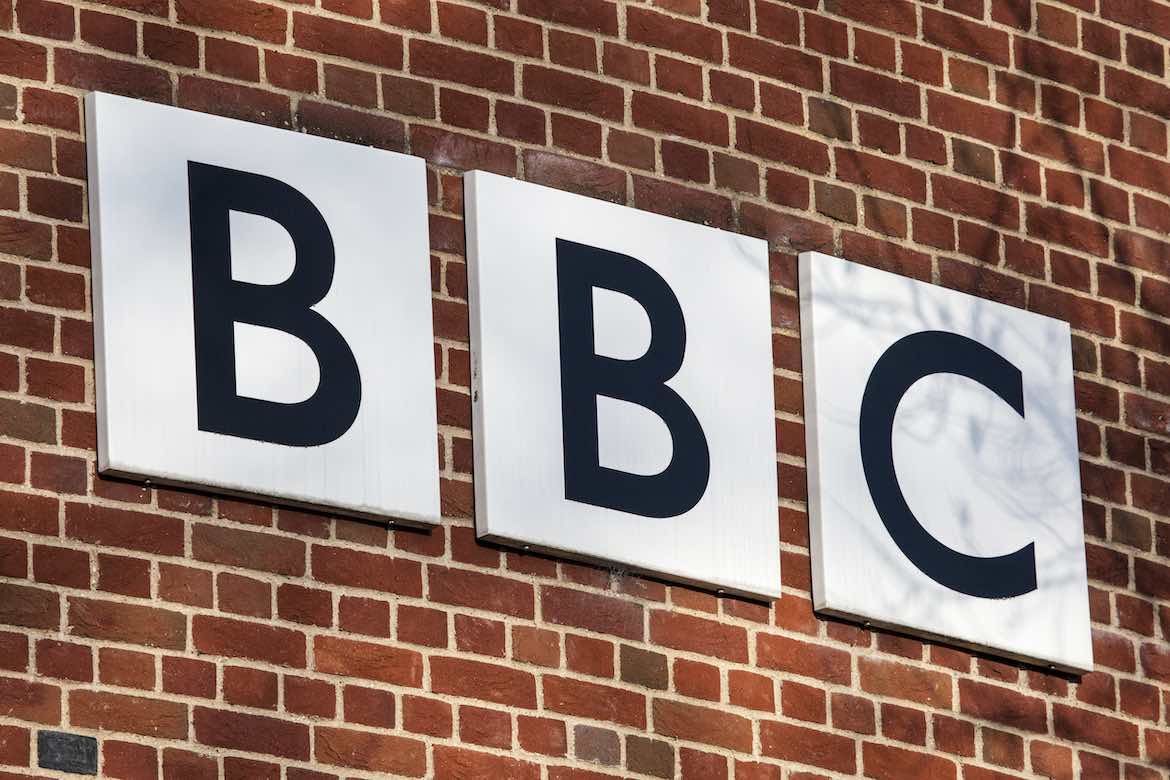‘The Pub’ #35: Torey Malatia is back; the youngest general managers in public media

Malatia, Loya, Srbinovich (Photos: WBEZ via Flickr, KCOS, Knight Foundation via Flickr)
The most famous general manager in public radio, Torey Malatia, is going to try again with another station.
The former longtime head of WBEZ in Chicago, who resigned from the position under pressure in 2013, starts Monday as the new president, c.e.o. and general manager of Rhode Island Public Radio in Providence.
When I asked why he wanted to get back in the game, Malatia told me he still wants to experiment with new models of reaching different audiences and building community, and a smaller station like RIPR might be the ideal place to do it.
“How does one reach people who have a very different use of broadcast but who still may have a real craving for the value, the mission that public media brings? I think that’s an exploration worth doing,” he told me on The Pub, asserting that was basically the point on which he and the Chicago Public Media board failed to see eye-to-eye.
On the show this week, Malatia talks about his goals for Rhode Island, looks back on his time in Chicago and contemplates whether the strategy of launching new national shows — like the hits This American Life and Wait Wait . . . Don’t Tell Me! he nurtured at WBEZ — still makes sense for stations today.
Also on the show:
- A conversation with two of the youngest general managers in public media: 30-year-old Michelle Srbinovich of WDET radio in Detroit, and 32-year-old Emily Martin Loya of KCOS-TV in El Paso, Texas.
- My thoughts on the BBC’s new plan to offer free content to local newspapers.
We’re doing a live show in Los Angeles Sept. 25! Seats are very limited, so go here to register your free tickets.
Please subscribe to The Pub in iTunes or your favorite podcast app, and leave us a rating and a comment! That will help boost our search results and allow people to find the show more easily.
We welcome your feedback on the show: You can reach me at adam@current.org or @aragusea on Twitter; my supervising producer at Current, Mike Janssen, is at mike@current.org; and you can contact Current generally at news@current.org or @currentpubmedia on Twitter.
If you’d like to offer a comment to be used in the program, please send on-mic tape (recorded in a studio, with a kit, a smartphone, anything) to adam@current.org either as an attachment or through Google Drive. Please keep it short!
Adam Ragusea hosts Current’s weekly podcast The Pub and is a journalist in residence and visiting assistant professor at Mercer University’s Center for Collaborative Journalism.








Y’know, Adam, I became GM of WEOS (Finger Lakes Public Radio) in September 2007, which was about a month after I turned 31. And I believe Mary Olsen became GM at KCLU when she was 32 or 33, too. Granted, WEOS was a MUCH smaller operation than any of these, but it’s not all THAT unusual for young folks to be GM’s.
Indeed Aaron, you’re very special, your mother and I are both very proud of you. But Michelle is 30 and g.m. of the nation’s #11 radio market, so I figured she was worth a chat.
HAH! A well-executed burn, sir. I doff my cap to you! :)
In all seriousness, though, you might want to talk to Mary at some point. She’s done some remarkable things at KCLU, and while it’s technically a small market in terms of size, Santa Barbara is gargantuan in terms of power players and donor capacity.
(I also should note, I was GM for four years and decided I liked engineering much, much, MUCH better than being a GM. But it does give me an interesting perspective on the biz!)
Despite Torey’s respect from his colleagues in public radio, his time in Chicago had the media in town dinging him regularly as he made decisions that pissed off mostly niche groups. First, as he was starting he fired a weekend folk music DJ, which our alt-weekly the Reader made hay on for weeks, despite the fact that the guy was only on five hours a week. Next was almost 25 years of contention with some in the jazz community (despite the fact that his predecessor was planning to cut back on jazz programming before he was forced to resign–and they refused to accept when the music was dropped that he kept jazz on the station on a lot longer than anyone else probably would have). Then when “TAL” took off, people criticized him for alleged mistreatment of the original co-host of “The Wild Room,” the local program where Ira basically tested most of what we know as “TAL.” Then over a weekly program starring a popular sketch comedy group in Chicago (probably because they were doing jokes about Gen-X tropes). Then, when WBEZ LMAd Loyola University’s indie rock WLUW, complaints that the station would become NPR (impossible because its power is under NPR’s minimum requirement–and the station ended up sounding pretty much the same, except with better fundraising–when Loyola wanted the station back, there were even people complaining about that). And of course, the whole Vocalo kerfuffle (and as he mentioned, the flak he took for NPR and Doug Berman over the formative days of “Wait, Wait…”)
Some of this, of course, just goes with the territory for GMs–and if any other GM had made a lot of the decisions he made, other people would be angry with that person (see Laura Walker, Caryn Mathes, Bill Kling, Hawk Vanderwilt and others). But it’s interesting how much Chicago media’s treatment of him was so negative compared to his respect in the industry, the success of WBEZ and those national programs and the fact that for the most part, he was loved and supported by his staff–it says something that there was no attempt to unionize WBEZ by the staff until after Torey left.
“impossible because its power is under NPR’s minimum requirement”
Eh? I wasn’t aware of such a thing…
I believe that for many years you had to be at least 1,000 watts to be an NPR member–WLUW was and is 250.
I don’t think so; power without height is a meaningless number. KPCC in Los Angeles is only 600 watts, but it’s 5850ft above sea level b/c it’s on top of a major mountain, and thus is a full Class B FM equivalent (50,000 watts @ 500ft HAAT).
CPB has, for a while now, had rules about requiring that your Nielsen numbers be large enough, relative to your market size, to demonstrate that you’re actually serving the audience. (alternatively, you can claim non-federal financial support levels instead of Nielsen numbers to demonstrate the same thing)
Similarly, (and I just checked the Member Criteria on nprstations.org) there’s no size requirement for membership in NPR, *but* you do have to have five full-time (or FTE) employees. It’s hard to have enough revenue to support that many employees with a very small FM facility like WLUW, just because you’re not going to reach that many listeners and thus it’s hard to have a large enough donor base.
FWIW, WLUW is actually 100 watts ERP, but it’s at ~250ft above ground level, which isn’t very big. This is close to the smallest possible FM station you can have (outside of LPFM or FM translators). And worse, it’s based on the campus which is right on the lake edge, so half the signal is covering water. Even with the high population density of a city like Chicago, I imagine it would be very, very hard for WLUW to be an independent NPR member station.
BTW, the real-world difference between 100 and 250 watts is virtually nil. So I’m just nitpicking because I’m an engineer. :)
Great interview! I can attest to the well-roundedness and verve of our general manager, Emily Martin Loya. Emily hired me and I’m 59 and age doesn’t come into our discussion. I bring a lot to the table, and what I don’t know Emily has foraged ahead and trains me. There is a commonality between us: let’s make KCOS the best it can be! Best boss ever!